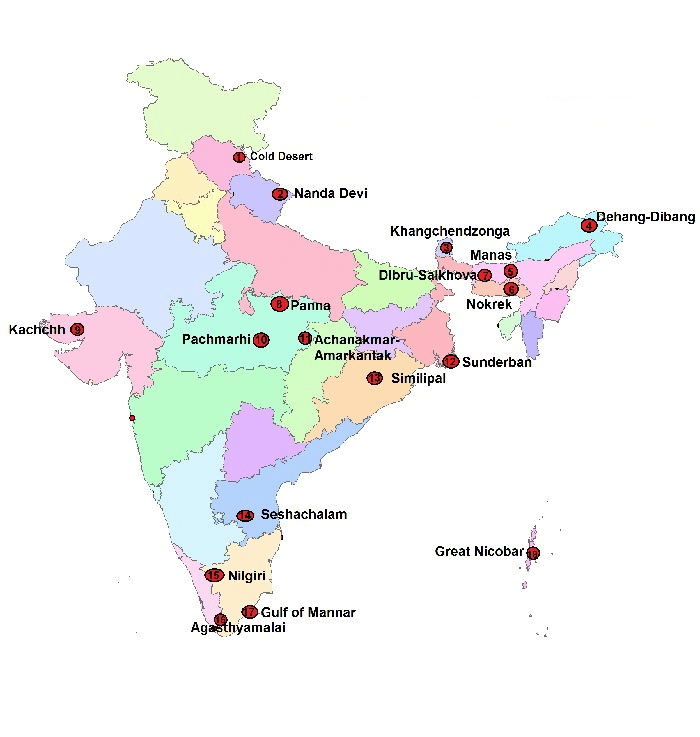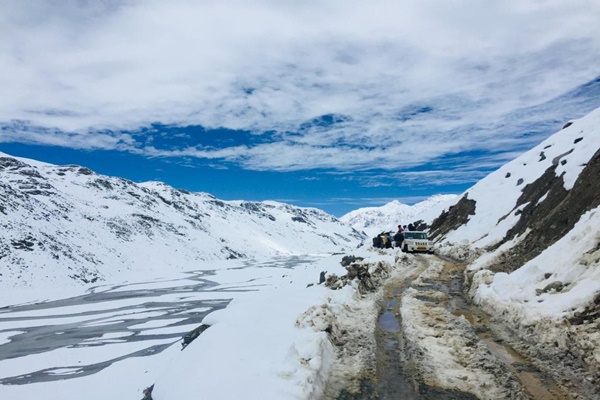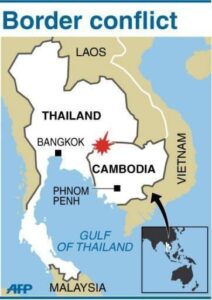UNESCO declared the Cold Desert Biosphere Reserve in Himachal Pradesh as India’s 13th UNESCO Biosphere Reserve.
Global Network: Added to the World Network of Biosphere Reserves (WNBR), which now has 785 sites worldwide.
Significance: First high-altitude cold desert Biosphere Reserve (BR) of India.
2. Location & Geography
State: Himachal Pradesh (Trans-Himalayan region, Spiti Valley).
Total Area: 7,770 km².
Altitude Range: 3,300 – 6,600 m above sea level.
Landscape features:
Windswept plateaus
Rugged high-altitude cold deserts
Glacial valleys
Alpine lakes
Protected Areas Included:
Pin Valley National Park
Chandratal & Sarchu
Kibber Wildlife Sanctuary
3. Biodiversity Significance
Flora
732 vascular plant species.
30 endemics (found only here).
157 near-endemics of Indian Himalayas.
Fauna (Iconic species)
Snow Leopard (Panthera uncia)
Himalayan Ibex (Capra sibirica)
Blue Sheep (Bharal) (Pseudois nayaur)
Himalayan Wolf (Canis lupus chanco)
Himalayan Snowcock (Tetraogallus himalayensis)
Golden Eagle (Aquila chrysaetos daphanea)
👉 Acts as a critical habitat for high-altitude and endangered species.
4. Human & Cultural Aspects
Population: ~12,000 inhabitants in scattered villages.
Livelihoods:
Traditional pastoralism
Yak & goat herding
Barley and pea farming
Tibetan herbal medicine
Cultural Practices:
Strong Buddhist monastic traditions.
Community councils (local governance) regulate use of fragile alpine resources.
Represents a balance between cultural heritage & fragile ecosystem management.
5. Importance of Designation
Conservation: Protects one of the world’s coldest and driest ecosystems.
Sustainability: Supports eco-friendly livelihoods of local communities.
Symbolic Value: Reflects India’s commitment to conservation + sustainable development.
Learning Site: Serves as a “learning place for sustainable development” under UNESCO’s MAB Programme.
6. UNESCO’s Man and the Biosphere (MAB) Programme
Launched: 1971 (celebrated 50 years in 2025).
Objective: Build scientific basis for improving relationships between people & environment.
Approach: Combines natural & social sciences.
Functions of Biosphere Reserves:
Conservation → Biodiversity & cultural heritage.
Development → Eco-friendly socio-economic growth.
Logistic Support → Research, education, monitoring, conflict resolution.
Purpose: Provide local solutions to global environmental challenges.
7. About the 5th World Congress of Biosphere Reserves (WCBR)
Largest & most influential conference under MAB Programme.
Participants: 3,000+ delegates from 100+ countries.
First time in Asia (earlier held in Europe/Americas only).
Significance: Strengthens global inclusivity of the programme.
8. India’s UNESCO-Recognized Biosphere Reserves (13)
Nilgiri (1986)
Nanda Devi (1988)
Nokrek (1988)
Gulf of Mannar (1989)
Sundarbans (1989)
Similipal (2009)
Pachmarhi (2009)
Achanakmar–Amarkantak (2012)
Great Nicobar (2013)
Agasthyamala (2016)
Khangchendzonga (2018)
Panna (2020)
Cold Desert (2025)
 Map shows the list of 18 Biosphere Reserves in India
Map shows the list of 18 Biosphere Reserves in India
9. UPSC Relevance
Prelims: Location, features, flora/fauna, UNESCO recognition, WNBR numbers.
Mains (GS-III: Environment):
Role of Biosphere Reserves in conservation & sustainable development.
Integration of local communities in conservation efforts.
Essay / Ethics: Example of “harmony between people and nature”.
✅ Summary in One Line:
The Cold Desert Biosphere Reserve of Himachal Pradesh, covering Pin Valley NP and adjoining areas, is India’s 13th UNESCO Biosphere Reserve—marking the nation’s first high-altitude cold desert reserve, combining biodiversity conservation with community-based sustainable practices under UNESCO’s MAB Programme.






